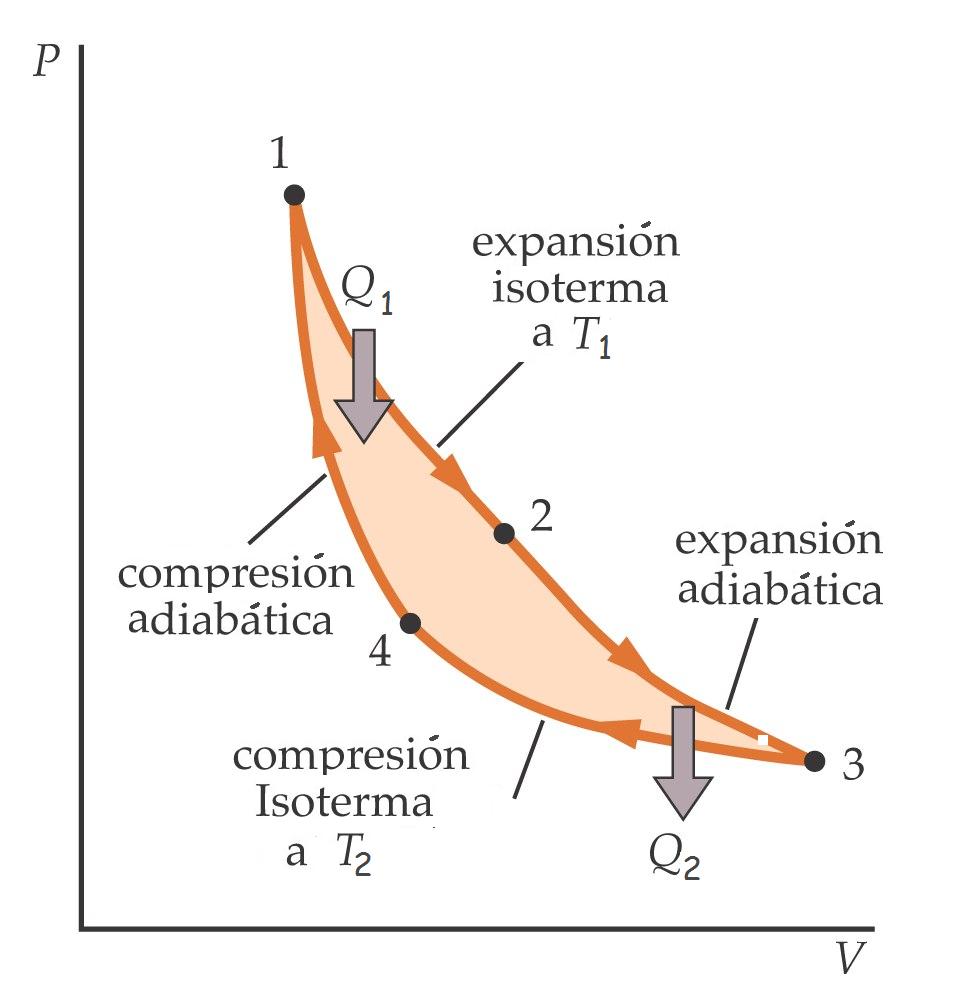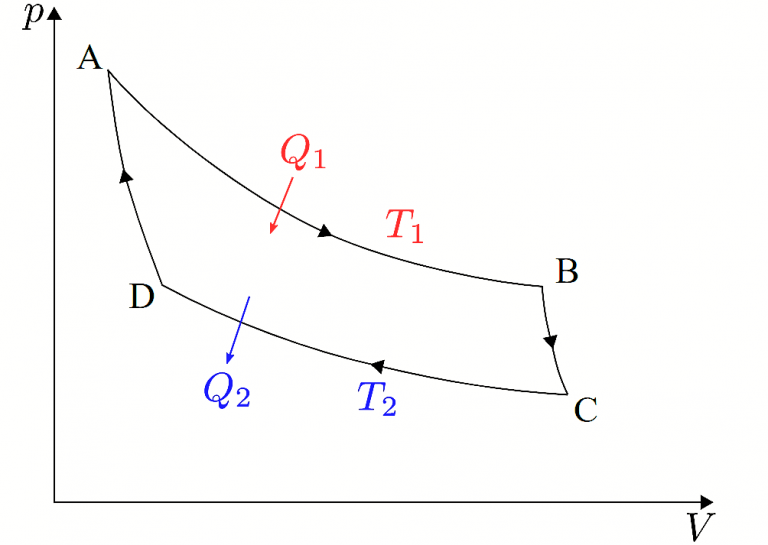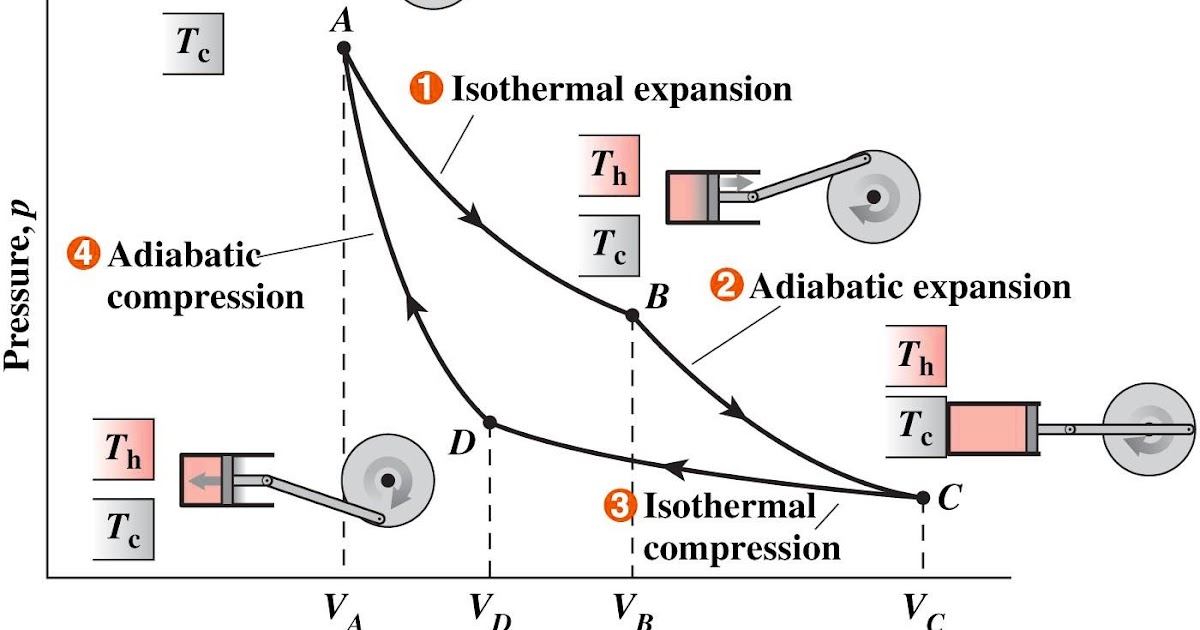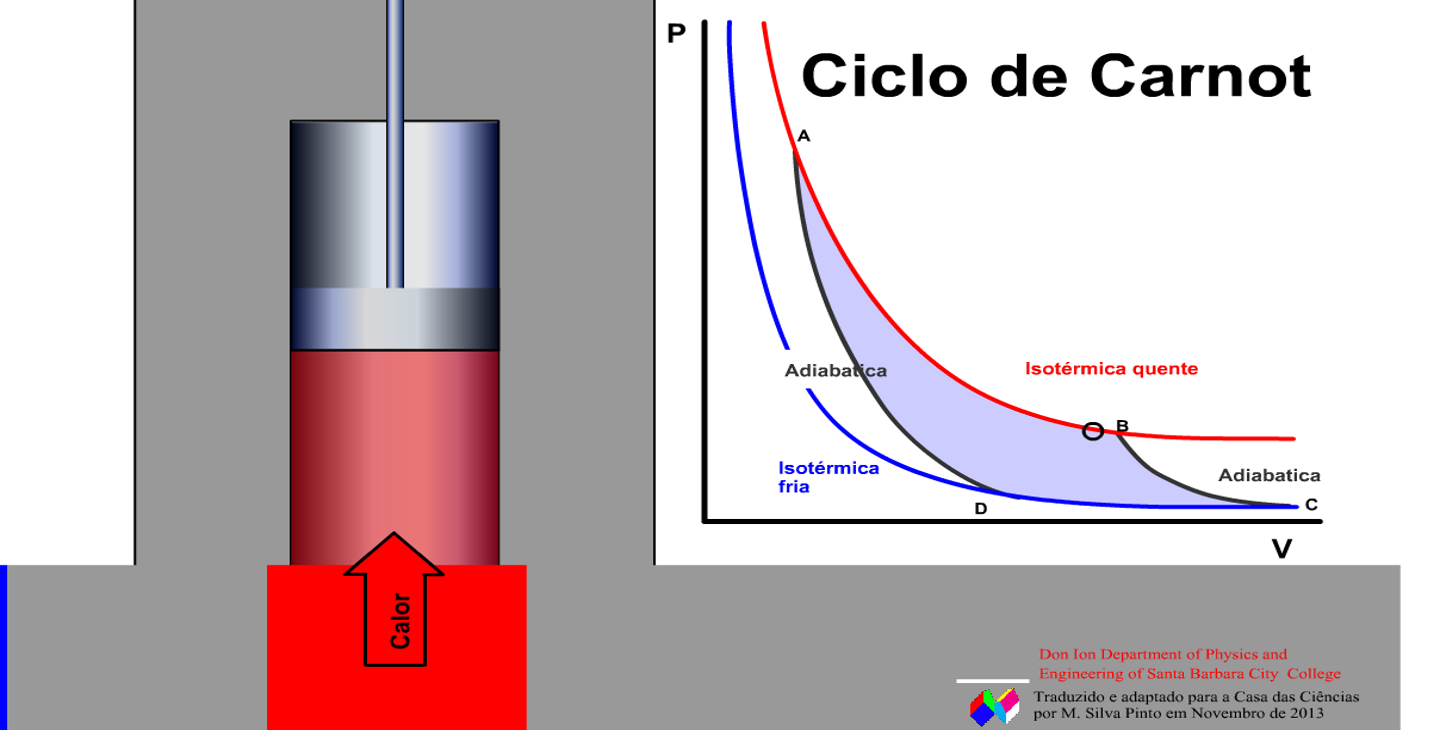
Termodinámica ciclo de Carnot YouTube
Il ciclo di Carnot è un ciclo ideale da cui si può partire per costruire una macchina termica, ossia una macchina che assorbe energia nel modo calore e la restituisce nel modo lavoro.

Il Ciclo di Carnot YouTube
LA FISICA FACILE - Il Ciclo di CarnotIn questo estratto della mia video lezione sulla termodinamica, parlo del ciclo di Carnot ed alcuni principi sulle macch.

Ciclo de Carnot características, etapas y limitaciones Meteorología
In a Carnot cycle, a system or engine transfers energy in the form of heat between two thermal reservoirs at temperatures and (referred to as the hot and cold reservoirs, respectively), and a part of this transferred energy is converted to the work done by the system. The cycle is reversible, and there is no generation of entropy.

The Carnot cycle is more properly known by its full title, the "Carnot
Educ., 1944, 21, 600-601. Salter, C. J. Chem. Educ., 2000, 77, 1027-1030. 13.1: Carnot Cycle is shared under a not declared license and was authored, remixed, and/or curated by LibreTexts. The Carnot cycle has the greatest efficiency possible of an engine (although other cycles have the same efficiency) based on the assumption of the absence of.

Ciclo de Carnot Explicacion, Ejemplos y sus fases explicadas
Carnot cycle. Sadi Carnot, (born June 1, 1796, Paris, Fr.—died Aug. 24, 1832, Paris), French scientist who described the Carnot cycle, relating to the theory of heat engines. Carnot was the eldest son of the French Revolutionary figure Lazare Carnot and was named for a medieval Persian poet and philosopher, Saʿdī of Shīrāz.

eXe
A Carnot cycle is an idealized process composed of two isothermal and two adiabatic transformations. Each transformation is either an expansion or a compression of an ideal gas. All transformations are assumed to be reversible, and no energy is lost to mechanical friction. A Carnot cycle connects two "heat reservoirs" at temperatures Th.

New Que Es El Ciclo De Carnot Most Popular Mercio Mapa
A principios de la década de los años 20 del siglo XIX, Sadi Carnot (1786-1832), un ingeniero francés, se interesó por mejorar la eficiencia de las máquinas térmicas prácticas. En 1824, sus estudios le llevaron a proponer un hipotético ciclo de trabajo con el mayor rendimiento posible entre los mismos dos reservorios, conocido actualmente como ciclo de Carnot.
Scienza Laterale Conoscere, Capire, Approfondire Il ciclo di Carnot
Ciclo de Carnot: etapas, importancia y eficiencia. El ciclo de Carnot es un concepto fundamental en la termodinámica y representa un modelo ideal de una máquina térmica reversible que opera entre dos fuentes de calor, una caliente y una fría. Este ciclo fue propuesto por el físico francés Sadi Carnot en 1824 y es esencial para comprender.

Carnot cycle Chemistry Dictionary & Glossary
El ciclo de Carnot se puede considerar como, el ciclo de motor térmico mas eficiente permitido por las leyes físicas. Mientras que la segunda ley de la termodinámica dice que no todo el calor suministrado a un motor térmico, se puede usar para producir trabajo, la eficiencia de Carnot establece el valor límite de la fracción de calor que.

Ciclo de Carnot simulación YouTube
3. The work done on the gas in one cycle of the Carnot refrigerator is shown and given by the area enclosed by the loop MPONM. The work done on the ideal gas is equal to the area enclosed by the path of the pV diagram. From the first law, this work is given by. W = Qh −Qc. (4.6.13) (4.6.13) W = Q h − Q c.

Ciclo de Carnot Qué es, etapas, historia, teoremas, fórmulas Invertido
The Carnot Cycle. The Carnot cycle consists of the following four processes: A reversible isothermal gas expansion process. In this process, the ideal gas in the system absorbs qin q i n amount heat from a heat source at a high temperature Thigh T h i g h, expands and does work on surroundings.

Carnot Cycle MechanicsTips
El ciclo de Carnot es un proceso cíclico reversible y teórico que usa un gas perfecto y que está formado por dos tipos de transformaciones isotérmicas y dos de tipo adiabáticas que puede convertir en calor el trabajo. En qué consiste el ciclo de Carnot Quién lo propuso Historia Etapas del ciclo de Carnot Teoremas Fórmulas del ciclo de Carnot

O Ciclo De Carnot Suhu
Il ciclo di Carnot è un ciclo termodinamico costituito da quattro trasformazioni: un'espansione isoterma, un'espansione adiabatica, una compressione isoterma e una compressione adiabatica, che complessivamente riportano il gas allo stato iniziale.

Ciencias de Joseleg El ciclo de Carnot en el diagrama PV
C Carnot heat engine (40 F) Pages in category "Carnot cycle" This category contains only the following page. C Carnot cycle Media in category "Carnot cycle" The following 107 files are in this category, out of 107 total. 2da ley de la termodinámica, carnot.gif 150 × 200; 5 KB Callen-front-2nd-ed.jpg 333 × 499; 26 KB

Casa das Ciências Ciclo de Carnot 02
Esquema de una máquina de Carnot. La máquina absorbe calor desde la fuente caliente T 1 y cede calor a la fría T 2, produciendo trabajo. El ciclo de Carnot es un ciclo termodinámico que se produce en un equipo o máquina cuando trabaja absorbiendo una cantidad de calor Q1 de una fuente de mayor temperatura y cediendo un calor Q2 a la de.

Ciclo de Carnot, parte II YouTube
Figure 6.4.3 Carnot heat engine: [latex]P-\mathbb{V}[/latex] diagram Figure 6.4.4 Carnot heat engine: T-S diagram. Because the Carnot heat engine cycle is an ideal cycle consisting of only reversible processes, it produces the maximum power output and has the maximum thermal efficiency among all heat engines operating between the same heat source at and the same heat sink at .